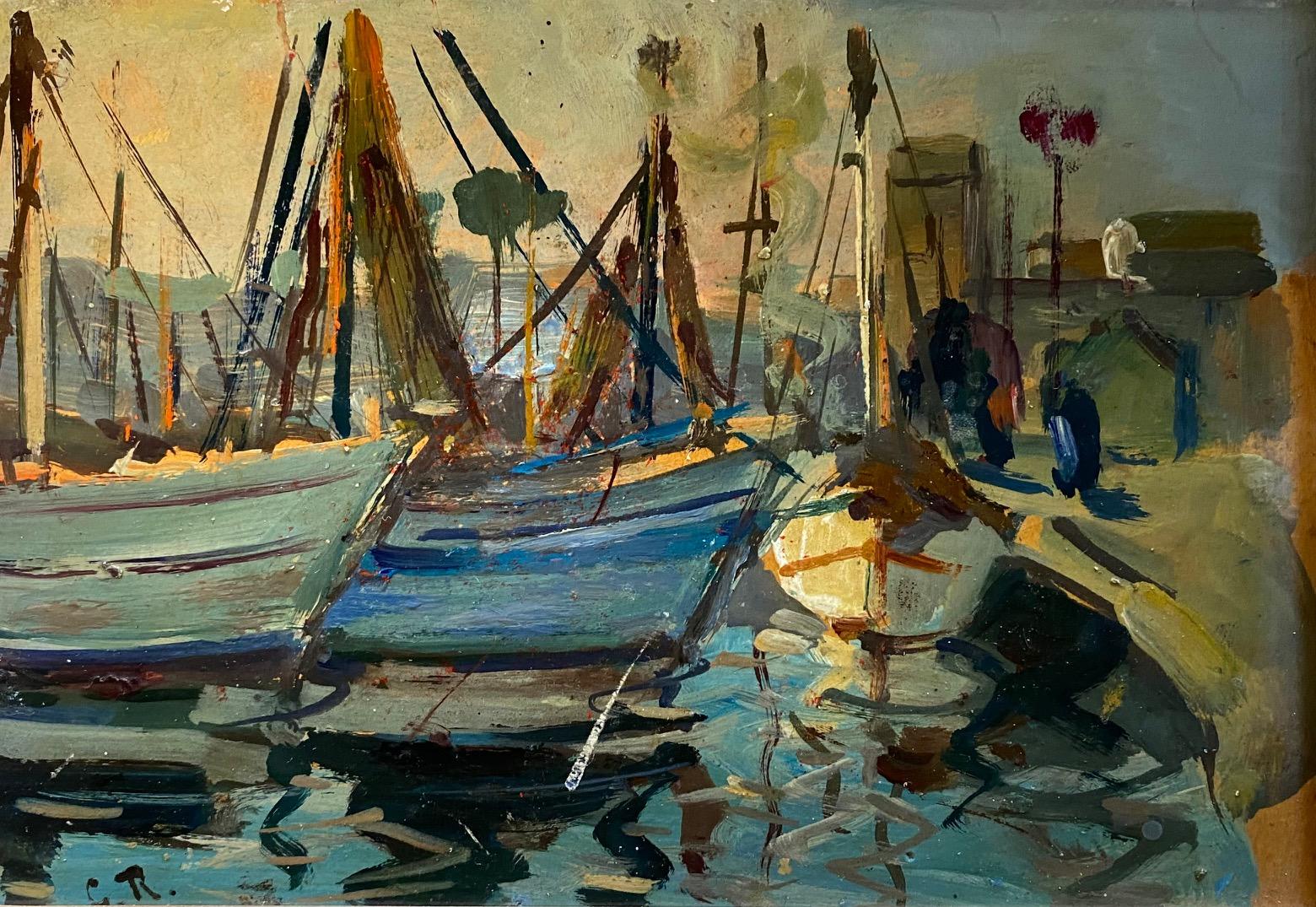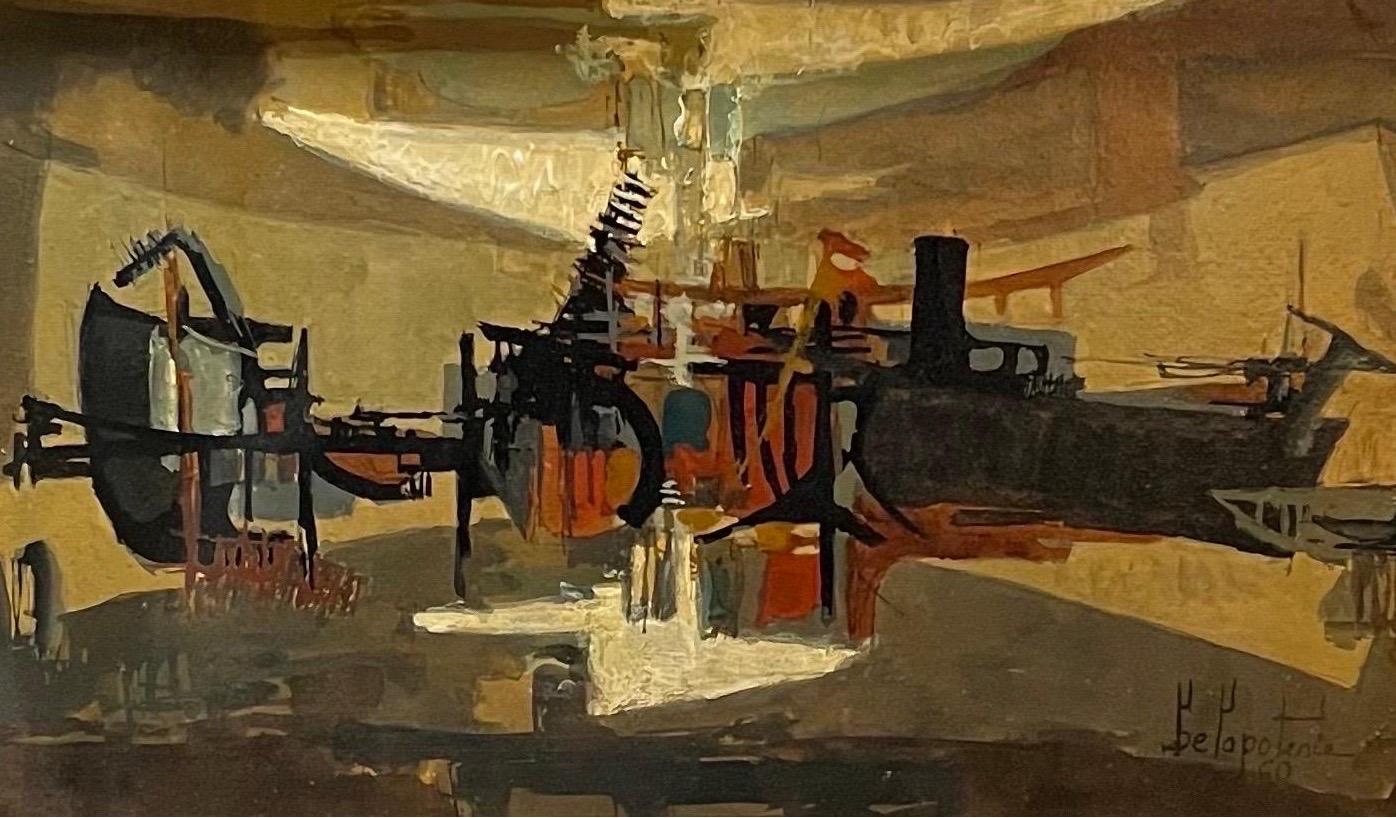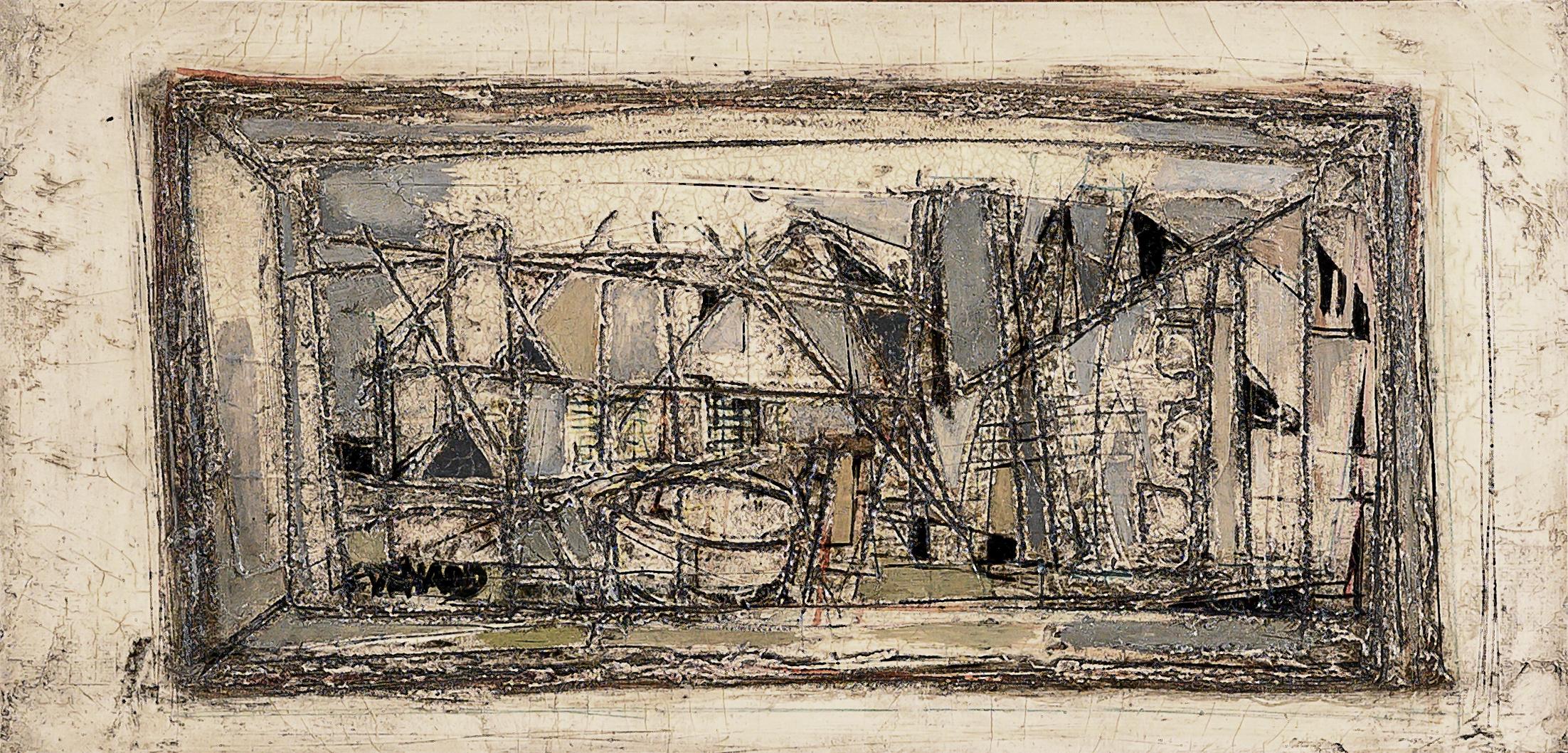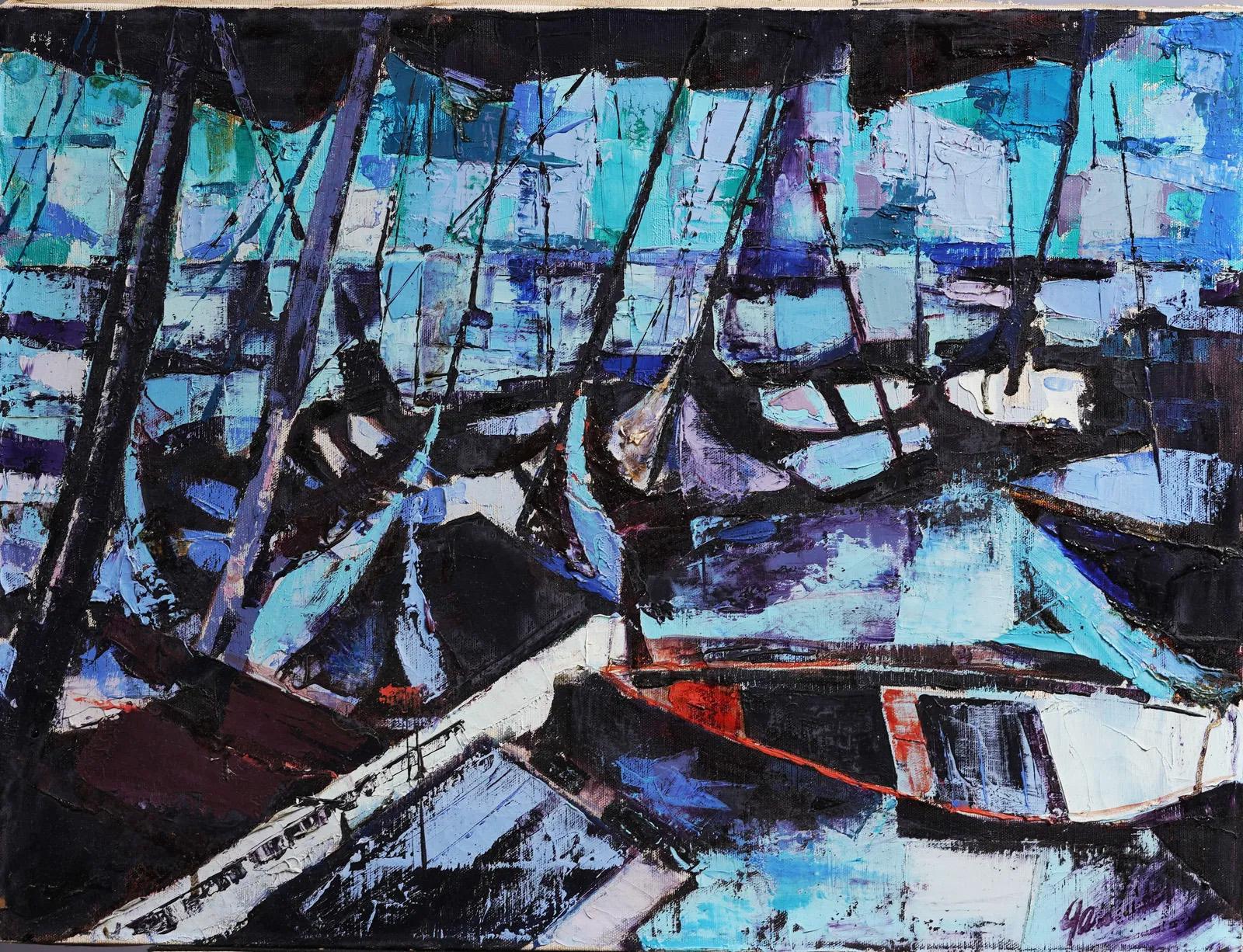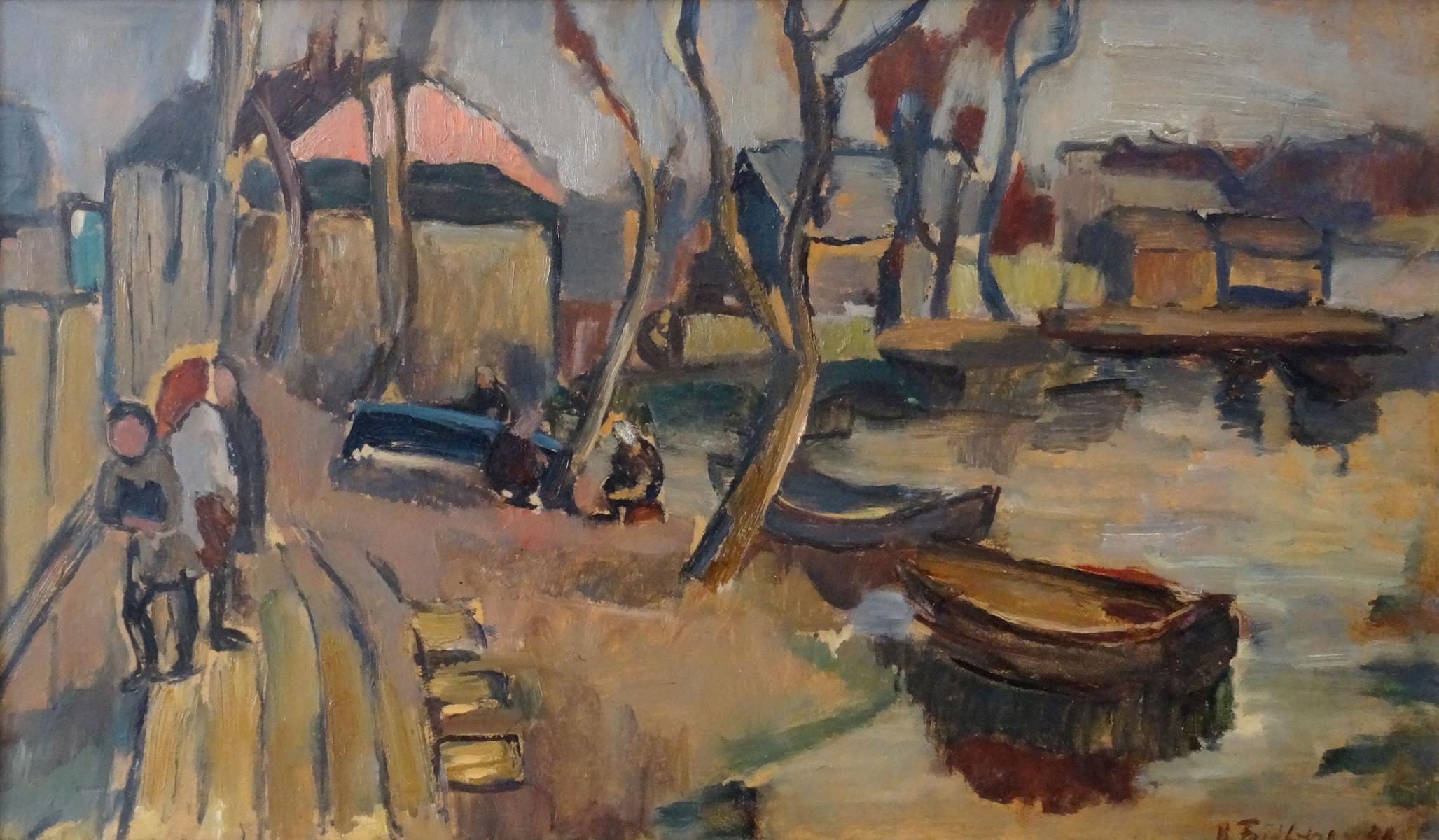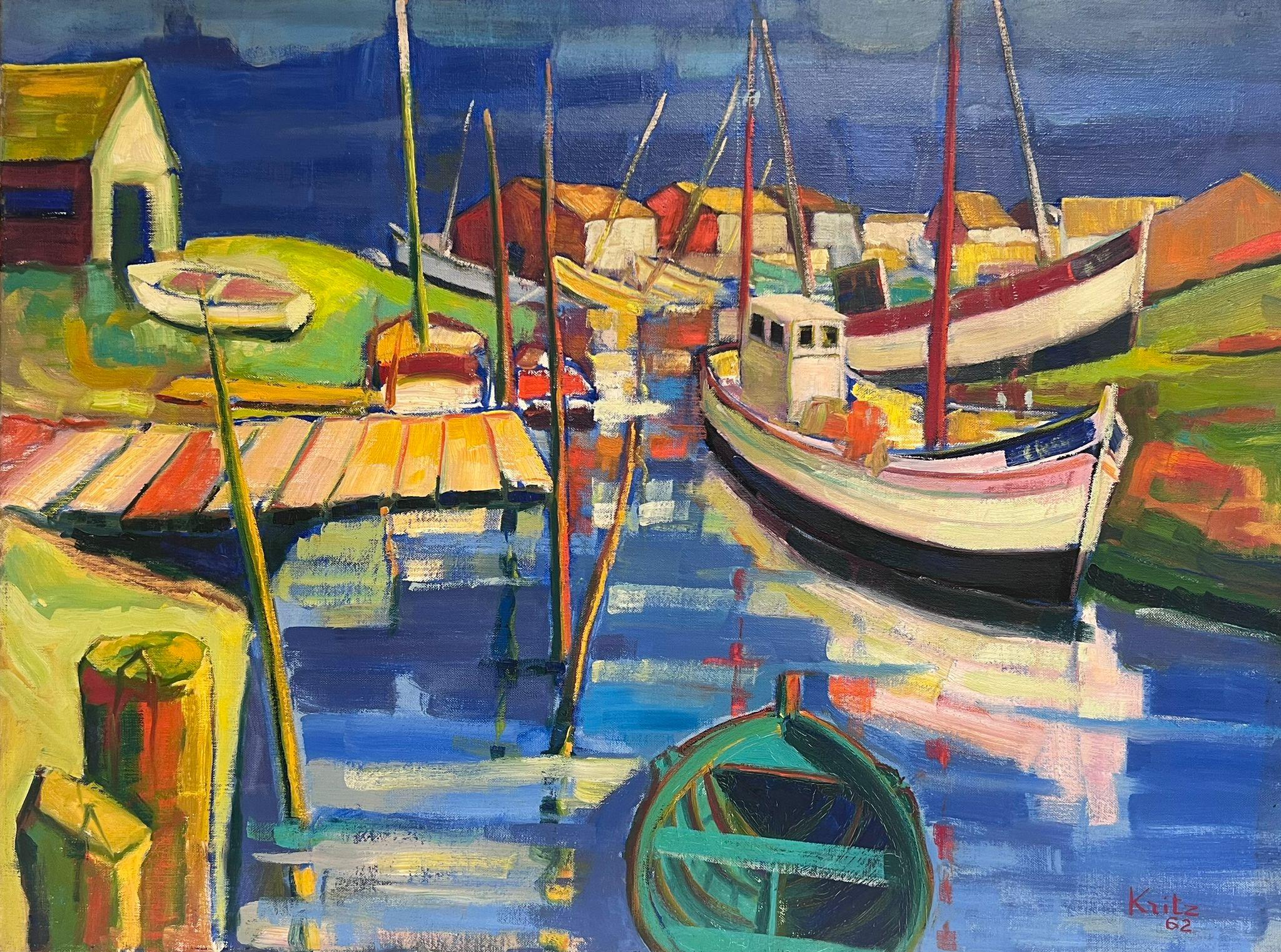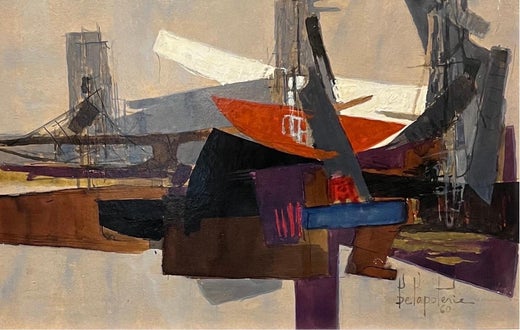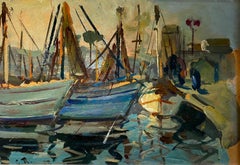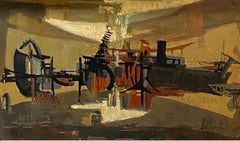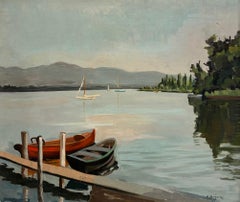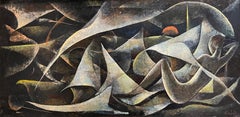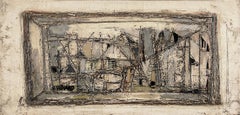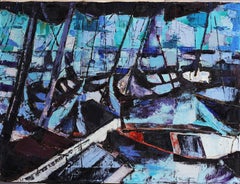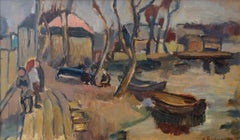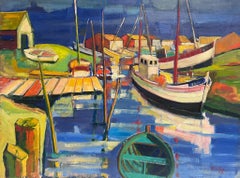Items Similar to Landscape with Boats by Paul Delapoterie - Oil on wood 38x61 cm
Video Loading
Want more images or videos?
Request additional images or videos from the seller
1 of 14
Paul DelapoterieLandscape with Boats by Paul Delapoterie - Oil on wood 38x61 cm1950
1950
$1,256
$1,57020% Off
£953.71
£1,192.1420% Off
€1,090.64
€1,363.3020% Off
CA$1,754.81
CA$2,193.5220% Off
A$1,951.74
A$2,439.6720% Off
CHF 1,019.14
CHF 1,273.9220% Off
MX$23,750.56
MX$29,688.1920% Off
NOK 13,015.92
NOK 16,269.9020% Off
SEK 12,206.64
SEK 15,258.3020% Off
DKK 8,139.86
DKK 10,174.8220% Off
Shipping
Retrieving quote...The 1stDibs Promise:
Authenticity Guarantee,
Money-Back Guarantee,
24-Hour Cancellation
About the Item
Paul Delapoterie, born in 1930, is a painter from Geneva, Switzerland. His work spans various styles, including abstract landscapes, figurative portraits, and surrealist pieces. Known for his versatile artistic expression, Delapoterie's paintings are found in collections and galleries across the region. His abstract landscapes, in particular, have garnered significant attention for their contemporary appeal. Delapoterie’s works have been exhibited in notable galleries such as Galerie Gijsel in Geneva, where his pieces have been appreciated by collectors and art enthusiasts alike.
Artwork sold with frame ( 61x84 cm)
- Creator:Paul Delapoterie (1930, Swiss)
- Creation Year:1950
- Dimensions:Height: 14.97 in (38 cm)Width: 24.02 in (61 cm)Depth: 0.4 in (1 cm)
- Medium:
- Movement & Style:
- Period:
- Condition:
- Gallery Location:Geneva, CH
- Reference Number:1stDibs: LU1434215163012
Paul Delapoterie, born in 1930, is a painter from Geneva, Switzerland. His work spans various styles, including abstract landscapes, figurative portraits, and surrealist pieces. Known for his versatile artistic expression, Delapoterie's paintings are found in collections and galleries across the region. His abstract landscapes, in particular, have garnered significant attention for their contemporary appeal. Delapoterie’s works have been exhibited in notable galleries such as Galerie Gijsel in Geneva, where his pieces have been appreciated by collectors and art enthusiasts alike.
About the Seller
4.9
Platinum Seller
Premium sellers with a 4.7+ rating and 24-hour response times
Established in 2016
1stDibs seller since 2020
277 sales on 1stDibs
Typical response time: <1 hour
- ShippingRetrieving quote...Shipping from: Geneva, Switzerland
- Return Policy
Authenticity Guarantee
In the unlikely event there’s an issue with an item’s authenticity, contact us within 1 year for a full refund. DetailsMoney-Back Guarantee
If your item is not as described, is damaged in transit, or does not arrive, contact us within 7 days for a full refund. Details24-Hour Cancellation
You have a 24-hour grace period in which to reconsider your purchase, with no questions asked.Vetted Professional Sellers
Our world-class sellers must adhere to strict standards for service and quality, maintaining the integrity of our listings.Price-Match Guarantee
If you find that a seller listed the same item for a lower price elsewhere, we’ll match it.Trusted Global Delivery
Our best-in-class carrier network provides specialized shipping options worldwide, including custom delivery.More From This Seller
View AllBoats by G. Roger - Oil on wood 21x15 cm
Located in Geneva, CH
Work on wood sold with frame
Total size with frame 33x39 cm
Signed
Guillaume G. ROGER is an artist born in 1867 and died in 1943. His works have been sold at public auction 120 ti...
Category
1910s Modern Landscape Paintings
Materials
Oil
$1,520 Sale Price
20% Off
Construction Site Landscape by Paul Delapoterie - Oil on wood 43.5x61 cm
Located in Geneva, CH
Paul Delapoterie, born in 1930, is a painter from Geneva, Switzerland. His work spans various styles, including abstract landscapes, figurative portraits, and surrealist pieces. Know...
Category
Mid-20th Century Modern Abstract Paintings
Materials
Wood, Oil
$1,256 Sale Price
20% Off
Boats on the Leman lake by René Béguin - Oil on canvas 54x65 cm
Located in Geneva, CH
Oil on canvas sold with frame
Total size with frame 67x78 cm
René BEGUIN is a Swiss artist born in 1892 and died in 1947. His works have been sold at public auction 12 times, mainly...
Category
Early 20th Century Modern Landscape Paintings
Materials
Oil
Abstract Composition N°3 by Vivaldo Martini - Oil on masonite 53x106 cm
By Vivaldo Martini
Located in Geneva, CH
His first name sounds like a concerto. Vivacious, its name is reminiscent of an aperitif or a cyclist. The addition of the two evokes the Italianate. Indomitable and unavoidable. Mor...
Category
Mid-20th Century Post-War Abstract Paintings
Materials
Oil, Masonite
Venice in December by Céelle - Oil on canvas 50x73 cm
By Céelle
Located in Geneva, CH
Work on canvas
Gilded wooden frame
66,5 x 90 x 3,5 cm
CÉELLE is an artist born in France in 1929 and died in 2018. Her works have been sold at public auction 64 times, mainly in the...
Category
Mid-20th Century Modern Landscape Paintings
Materials
Oil
Boats in front of the 4 white houses by Jean Louis Getaz - Oil on canvas 40x60
Located in Geneva, CH
Work on canvas with frame
Total size with frame: 86x66x6 cm
Jean-Louis GETAZ is an artist born in 1931 and died in 2002. His works have been sold at public auction 60 times, mainly...
Category
1980s Impressionist Landscape Paintings
Materials
Oil
You May Also Like
'Boats in the Harbour' Abstract 20th century painting of boats, sails, landscape
By Claude Venard
Located in Shrewsbury, Shropshire
'Boats in the Harbour' by Claude Venard is an early 20th Century abstract painting of a harbour scene. Venard reflects his post-c...
Category
20th Century Abstract Abstract Paintings
Materials
Canvas, Oil
Antique American Modernist Abstract Harbor Seascape Signed Original Oil Painting
Located in Buffalo, NY
Antique American modernist seascape oil painting. Oil on canvas. Signed. Measuring 18 by 24 inches.
Category
1960s Abstract Abstract Paintings
Materials
Canvas, Oil
Boats by the river Oil on cardboard, 47.5x80 cm
Located in Riga, LV
Boats by the river
Oil on cardboard, 47.5x80 cm
The main focus of the artwork is a fauvistic stylized landscape featuring boats by the river. The artist's intention is to convey the landscape in bold and vivid earth tones, characteristic of the fauvist style.
Biruta Baumane...
Category
1950s Fauvist Landscape Paintings
Materials
Oil, Cardboard
$1,869 Sale Price
20% Off
Colorful Boats in Estuary Harbor 1960's French Modernist Signed Oil Painting
Located in Cirencester, Gloucestershire
The Harbor
by Michel Kritz (French 1925-1994)
signed and dated 62'
signed oil on canvas, unframed
canvas: 24 x 32 inches
provenance: private collection, France
condition: very good a...
Category
Mid-20th Century Impressionist Landscape Paintings
Materials
Canvas, Oil
Boats in the Harbor, Abstract Oil Painting on Canvas by David Azuz
By David Azuz
Located in Long Island City, NY
Artist: David Azuz, Israeli/French (1942 - 2014)
Title: Boats in the Harbor
Year: 1960
Medium: Oil on Canvas, signed l.l. and verso
Size: 31 x 25.5 in. (78.74 x 64.77 cm)
Frame Size:...
Category
1970s American Modern Landscape Paintings
Materials
Oil, Canvas
"Seascape" Mid Century Modern Impasto Painting of Boats, Beach, Ocean, Sky, Sand
By Italo Botti
Located in Austin, TX
Italio Botti created this cheerful seascape in thick impasto oil paint on canvas. The scene depicts a sunny beach with an orange boat in the foreground. In the distance in a pale b...
Category
20th Century Landscape Paintings
Materials
Oil, Board
